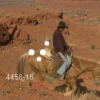Free Online Productivity Tools
i2Speak
i2Symbol
i2OCR
iTex2Img
iWeb2Print
iWeb2Shot
i2Type
iPdf2Split
iPdf2Merge
i2Bopomofo
i2Arabic
i2Style
i2Image
i2PDF
iLatex2Rtf
Sci2ools
CVPR
2010
IEEE
2010
IEEE
Learning a Hierarchy of Discriminative Space-Time Neighborhood Features for Human Action Recognition
Recent work shows how to use local spatio-temporal features to learn models of realistic human actions from video. However, existing methods typically rely on a predefined spatial binning of the local descriptors to impose spatial information beyond a pure "bag-of-words" model, and thus may fail to capture the most informative space-time relationships. We propose to learn the shapes of space-time feature neighborhoods that are most discriminative for a given action category. Given a set of training videos, our method first extracts local motion and appearance features, quantizes them to a visual vocabulary, and then forms candidate neighborhoods consisting of the words associated with nearby points and their orientation with respect to the central interest point. Rather than dictate a particular scaling of the spatial and temporal dimensions to determine which points are near, we show how to learn the class-specific distance functions that form the most informative configura...
Computer Vision | CVPR 2010 | Informative Space-time Relationships | Local Spatio-temporal Features | Space-time Feature Neighborhoods |
| Added | 01 Apr 2010 |
| Updated | 14 May 2010 |
| Type | Conference |
| Year | 2010 |
| Where | CVPR |
| Authors | Adriana Kovashka, Kristen Grauman |
Comments (0)

